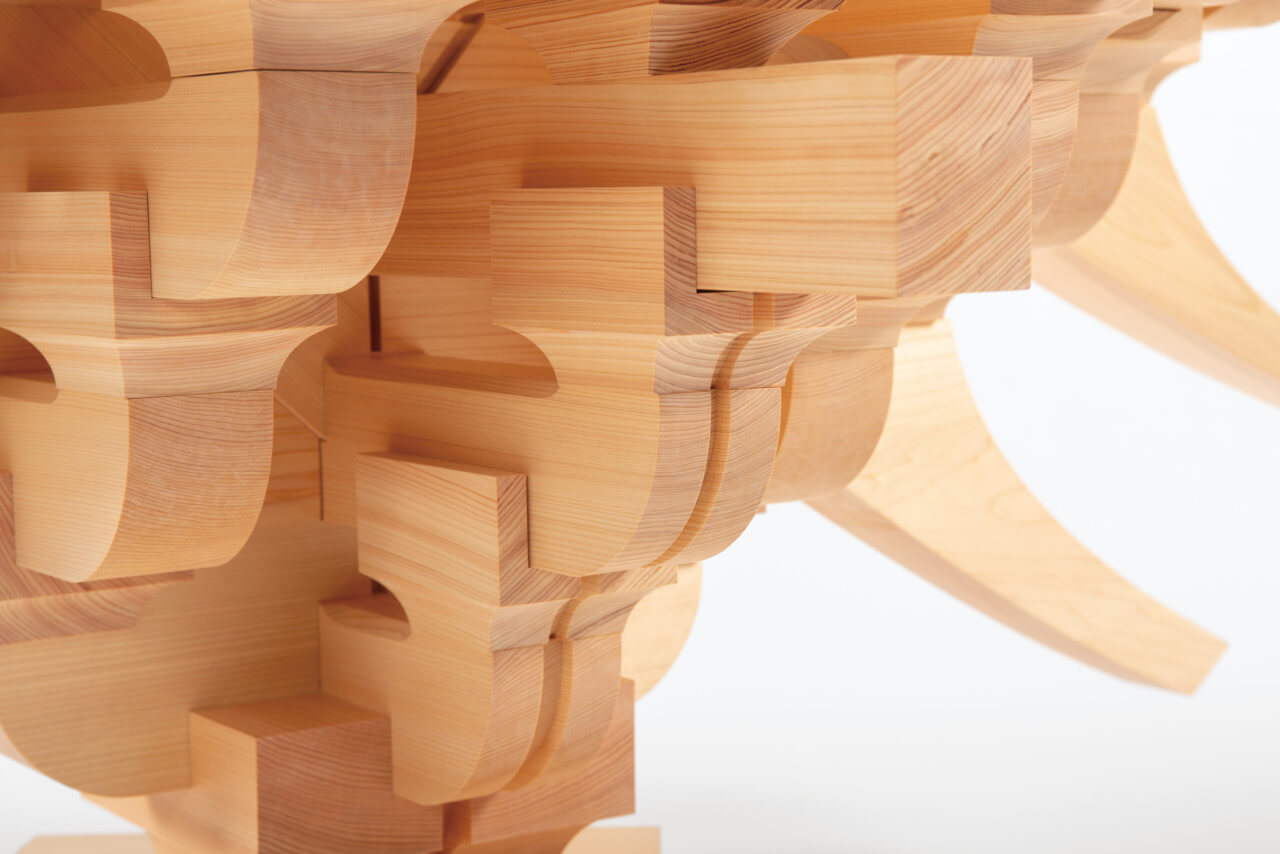In the world of craftsmanship and creativity, the question arises: is carpentry an art? Let’s dive in and explore the fascinating blend of skill and artistic expression that encompasses the world of carpentry.
When you think of art, the first things that may come to mind are paintings, sculptures, or music. But what about the intricate woodworking masterpieces created by carpenters? Carpentry combines technical expertise with a true artistic flair, transforming raw materials into functional yet visually stunning pieces.
Carpenters possess a unique ability to envision the final result and bring it to life, using their tools as brushes and wood as their canvas. So, let’s embark on a journey where craftsmanship meets creativity, discovering whether carpentry can truly be considered an art form.

Is Carpentry an Art? Exploring the Intersection of Craftsmanship and Creativity
When it comes to the question of whether carpentry can be considered an art, opinions may vary. Some may argue that carpentry is purely a practical skill, while others recognize the artistic elements woven into the craft. In this article, we will delve into the world of carpentry and examine the artistic aspects that can be found within this ancient trade. From the design process to the execution of intricate woodwork, we will explore the creativity, skill, and vision that make carpentry a true form of artistic expression.
The Artistry in Design: From Concept to Creation
The first step in any carpentry project is the design phase. Here, the carpenter must unleash their creative flair and envision the final product. Whether it’s a custom-built piece of furniture or an elaborate wooden structure, the design process requires a deep understanding of both form and function. Carpenters meticulously consider factors such as aesthetics, ergonomics, and the materials at hand.
During this stage, carpenters employ various techniques to bring their artistic vision to life. Sketching, computer-aided design (CAD), and physical models are commonly used to develop and refine concepts. Through these methods, carpenters can experiment with different shapes, proportions, and finishes, ensuring that the final product not only meets the client’s requirements but also showcases their unique artistic touch.
Beyond the technical aspects, the artistry in carpentry lies in the ability to transform a mere design into a masterpiece. Carpenters must have a keen eye for detail and an understanding of how various elements harmonize with one another. From the meticulous selection of wood grains to the careful consideration of joinery techniques, every decision made during the construction process contributes to the overall aesthetic appeal of the final piece.
Carpentry as an Expression of Personal Style
Carpentry is not just about following blueprints and assembling pieces of wood. It offers artisans the opportunity to infuse their work with their own personal style and creativity. From rustic and reclaimed designs to sleek and modern structures, carpenters can craft pieces that reflect their unique artistic sensibilities.
The choice of materials plays a significant role in expressing personal style in carpentry. Some carpenters are drawn to the warmth and character of natural hardwood, while others find beauty in repurposed or salvaged materials. By incorporating these distinctive materials, carpenters can imbue their creations with a sense of history, telling stories through the wood itself.
Furthermore, carpenters have the freedom to experiment with a wide range of techniques and finishes. From intricate carving to elaborate inlays, the possibilities for artistic expression are endless. By pushing the boundaries of traditional carpentry methods, artisans can create truly one-of-a-kind pieces that captivate the eye and evoke emotion.
Marrying Form and Function: The Functional Art of Carpentry
In addition to its artistic qualities, carpentry is fundamentally rooted in functionality. It is this harmonious marriage of form and function that sets carpentry apart from other art forms. Carpenters must balance the visual appeal of their creations with their utility and durability.
Whether building a sturdy table or a grand staircase, carpenters must consider the structural integrity of their work. This requires a deep understanding of the properties of different types of wood and a mastery of joinery techniques. Utilizing their expertise, carpenters can ensure that their artistic creations are not only visually striking but also built to withstand the test of time.
Moreover, carpentry has the power to transform spaces and enhance the lives of those who inhabit them. From custom-built cabinets that optimize storage to elegantly crafted shelving that showcases precious objects, carpenters have the ability to create functional pieces that seamlessly integrate with their surroundings. This ability to combine beauty with utility further highlights the artistry intrinsic to carpentry.
Beyond Wood: Discovering New Avenues of Artistic Expression
The artistry in carpentry extends beyond wood as the primary material. With advancements in technology and the introduction of new materials, carpenters now have the opportunity to explore previously uncharted territories of artistic expression.
The Fusion of Wood and Metal: Pushing Boundaries
One fascinating intersection of art and carpentry lies in the fusion of wood and metal. By incorporating metal elements into their designs, carpenters can create visually captivating pieces that blend organic beauty with industrial aesthetics.
Working with metal introduces new challenges and techniques, such as welding and forging. The combination of these skills with the traditional woodworking methods adds a layer of complexity and creativity to the art of carpentry. From hand-forged metal accents to structural supports, the incorporation of metal in carpentry allows artisans to push the boundaries of their craft and create truly unique works of art.
Embracing Modern Technologies: CNC and Digital Fabrication
The advent of technology has also opened doors to innovative approaches in carpentry. Computer Numerical Control (CNC) machines and digital fabrication techniques have revolutionized the way carpenters can bring their artistic ideas to life.
With CNC machines, intricate and precise designs can be carved out of wood with unparalleled accuracy. This technology allows carpenters to explore complex geometric patterns, intricate detailing, and even sculptural forms that were once extremely challenging to achieve by hand alone. By combining traditional craftsmanship with modern tools, carpenters can now create intricate and visually stunning pieces that push the boundaries of what is traditionally considered carpentry.
Environmental Consciousness: Sustainable Carpentry as Art
In recent years, there has been a growing emphasis on sustainable practices in various industries, including carpentry. As the world embraces the importance of preserving the environment, carpenters have found new artistic avenues in creating sustainable and eco-friendly pieces.
Using reclaimed wood, responsibly sourced materials, and eco-friendly finishes, carpenters can showcase their artistic skills while promoting environmental consciousness. By repurposing old furniture or salvaging discarded wood, artisans can breathe new life into materials that would’ve otherwise been discarded.
Sustainable carpentry serves as a testament to the artistic vision and skill of the carpenter, demonstrating that beauty can be achieved while honoring the earth’s resources. The incorporation of sustainable practices in carpentry highlights the evolving nature of the craft and its ability to adapt to contemporary environmental concerns.
The Ever-Evolving Art of Carpentry: A Dynamic Journey
Carpentry, at its core, is a unique blend of artistry and craftsmanship. It is an intricate dance between functionality and creativity, where each piece is a testament to the carpenter’s vision and skill. Whether it’s a finely sculpted woodwork or an awe-inspiring architectural structure, carpentry offers a canvas for artisans to express their artistic sensibilities.
As we have explored in this article, carpentry is not just a practical trade but a form of art that evolves alongside new materials, techniques, and environmental consciousness. From the design process to the execution and the infusion of personal style, carpentry encompasses the essence of artistic expression.
So the next time you admire a beautifully crafted piece of furniture or marvel at the intricate details of an architectural masterpiece, take a moment to appreciate the artistic journey that brought it to life. Carpentry truly is an art form that transcends boundaries and captivates the imagination.
Key Takeaways: Is Carpentry an Art?
- Carpentry is considered both a skilled trade and an art form.
- It requires creativity and craftsmanship to design and build unique wooden structures.
- Carpenters use various techniques and tools to bring their artistic vision to life.
- Carpentry can involve intricate details and decorative elements, showcasing the artistic aspect.
- Ultimately, whether carpentry is seen as art depends on the perspective of the observer.
Frequently Asked Questions
Carpentry is a skilled trade that involves the shaping, cutting, and installation of various wooden structures. It requires precision, creativity, and craftsmanship. But is carpentry considered an art? Let’s find out!
1. What is the difference between carpentry and art?
Carpentry and art share similarities but also have distinct differences. Carpentry focuses on the construction and functionality of wooden structures, such as furniture, buildings, and cabinets. It requires technical skills and knowledge of materials and tools.
On the other hand, art encompasses a broader range of creative expressions and can be subjective. Artists use various mediums, including wood, to create pieces that evoke emotion, challenge perspectives, and communicate ideas. While an artist can incorporate carpentry techniques into their work, their primary focus is the expression of creativity rather than functionality.
2. Can carpentry be considered an art form?
Yes, carpentry can indeed be considered an art form. Skilled carpenters can create intricate, aesthetically pleasing designs that showcase their creativity and talent. They can sculpt wood into unique shapes, carve intricate details, and incorporate artistic elements into their work.
Additionally, carpenters who specialize in fine woodworking, such as creating handcrafted furniture or sculptures, often bring a level of artistic skill and expression to their craft. Their creations can be considered works of art due to the attention to detail, unique design, and the craftsmanship involved.
3. What separates a carpenter from an artist?
While carpentry can involve artistic elements, there are some key differences that distinguish a carpenter from an artist. One difference lies in the primary objective: a carpenter’s main focus is to construct functional and structurally sound wooden structures.
An artist, on the other hand, may prioritize the expression of creativity, experimentation with different materials and techniques, and the communication of ideas or emotions. Artists often challenge traditional norms and strive to evoke an emotional response from the viewer.
4. Can some carpentry projects be both functional and artistic?
Absolutely! Certain carpentry projects can seamlessly blend functionality and artistry. For example, custom-designed furniture pieces can serve a practical purpose while also incorporating unique artistic features.
Carpenters can create intricate designs, add decorative elements, or use different wood species to enhance the aesthetics of their work. This integration of functional design and artistic expression allows the piece to serve its intended purpose while becoming a visually appealing focal point in any space.
5. Does the artistic aspect of carpentry affect its value?
Artistic elements in carpentry can indeed impact the value of a piece. When a carpenter incorporates artistic details and demonstrates exceptional craftsmanship, it elevates the overall quality and desirability of the work.
Artistically-crafted carpentry pieces can become sought-after and highly valued in the market, commanding a higher price due to their uniqueness, craftsmanship, and aesthetic appeal. However, the value of a carpentry piece can also be influenced by factors such as the reputation of the carpenter, rarity of the design, and the quality of materials used.

Amazing Skills Young Carpenter Transformation from Solid Block Wood to Garden Dining Table Art
Summary
Carpentry is indeed an art because it requires skill, creativity, and attention to detail. It involves shaping and creating objects from wood, and each piece can be unique and beautiful. Carpentry combines craftsmanship and artistic expression to create functional and aesthetically pleasing structures.
However, carpentry is also a practical skill that serves a purpose. It is not just about creating art for art’s sake but also about creating something useful and functional. It requires problem-solving and precision to construct buildings, furniture, and other structures that meet specific requirements. So yes, carpentry is definitely an art, but it is also a craft that blends creativity with practicality.
